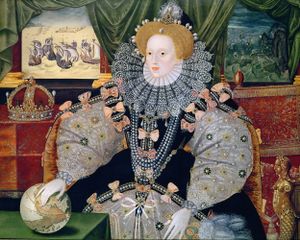Incorporating Arts Into Social Studies Curriculum Middle School Lesson Plans
In No More Telling as Teaching, Cris Tovani and Elizabeth Birr Moje propose that students frequently expect teachers to exercise most of the thinking for them in form. A condolement level exists for both parties when a single narrative removes the messiness of understanding topics beyond the surface level. Yet new content-area standards, such as those informed by the College, Career, and Borough Life Framework, require that students be the ones request questions, grappling with texts, and drawing their own conclusions about course concepts.
Repurposing instruction to elicit or contain students' ideas tin can seem daunting, especially when teachers must address specific content in their courses. Inquiry and construction exercise non need to exist mutually exclusive, though. In my classes, I frequently ask students to examine common sources using a specific lesson progression, with the agreement that no two individuals will emerge with the same conclusions from that work.
Using Fine art to Foster Critical Thinking
To that cease, I sometimes use works of art every bit launching points for my lessons. Viewing fine art can be powerful because each piece reflects the artist's interpretation of his or her world. Too, students' interpretations of the fine art volition vary depending on their prior knowledge, observational skills, and interests.
Museum educators use three guiding questions from Visual Thinking Strategies to elicit discussions, and they tin can assistance students focus when they view an artwork in the classroom for the outset time as well:
- What's going on in this film?
- What do you see that makes you say that?
- What more can you find?
When I design a lesson around an art piece, I don't simply jump into a discussion using these questions, though—I ask students to spend the first several minutes of the class observing the image independently and writing downwards their reflections to answer the questions. I write out my reflections with them every time, too, fifty-fifty though I'1000 familiar with the image, to model that my understanding evolves over time.
In their book 180 Days, Kelly Gallagher and Penny Kittle share that such extended periods of freewriting help students generate new ideas and communicate first-draft thinking. To further that kind of thinking, I later ask students to revisit and ostend or revise their responses as they see boosted texts that, in some way, connect to the initial paradigm.
For example, I focus a 9th-class Modern World History lesson related to the French Wars of Faith effectually a painting of the Saint Bartholomew's Day Massacre by François Dubois. So much is happening in the painting, and students almost always ask questions well-nigh why people are being thrown from windows, who the different groups represent, and what caused the conflict in the outset identify. Students write down their initial thoughts using the freewriting technique described in a higher place, and volunteers then share their comments through whole-class discussion.
The "investigation" part of the lesson comes when I ask students to work in pairs to read a short textbook segment related to the subject of the painting. I typically employ an interactive reading guide inspired by Doug Buehl's Classroom Strategies for Interactive Learning that prompts students to read chunks of text, summarize the principal ideas, and make connections to their written responses to the painting. Students first discuss this content with their partners and later accept the opportunity to share whatever new insights with other classmates earlier moving to the next short segment. With this approach, students are not reading the textbook but to acquire content—they're reading to construct meaning around the questions that they found of import equally they initially attempted to understand the painting.

George Gower
"Fleet Portrait" of Elizabeth I, artist unkown
In another lesson from the aforementioned unit, I use a variety of sources in addition to the textbook to aid students describe conclusions nigh the reign of Elizabeth I of England. The lesson is framed around her Armada Portrait, which generates many interesting questions from students: Why are there 2 different views out the windows? Why is her manus on the world? Does the crown that's prepare on the tabular array in the background symbolize anything?
For this lesson, students travel effectually the classroom to three centers, each of which includes a source that provides some context for the painting: a brief biography of Elizabeth I, the text of her voice communication to her troops apropos the Castilian Armada, and a curt video that highlights her accomplishments as queen. Students discuss each source in small groups and then individually write out short reflections that aid them process ideas related to their before questions.
At the conclusion of both of these lessons, I ask students to revise their freewrites with specific testify from their learning. Ideally, they'll be able to answer their initial questions, back up their inferences, and fill in any knowledge gaps that they identified at the kickoff of class. Posing new questions is fine, also, since the inquiry procedure is cyclical.
The artist Frida Kahlo one time said, "I paint flowers so they will non die." Building on that idea, art allows students to visually access historical content that might otherwise seem strange or irrelevant. Think about ane of your upcoming lessons and how a work of art might serve as an entry signal. You volition be amazed by the questions your students develop and the deep learning that happens as a result.
johnstonsheas1990.blogspot.com
Source: https://www.edutopia.org/article/framing-social-studies-lessons-around-works-art
0 Response to "Incorporating Arts Into Social Studies Curriculum Middle School Lesson Plans"
Postar um comentário